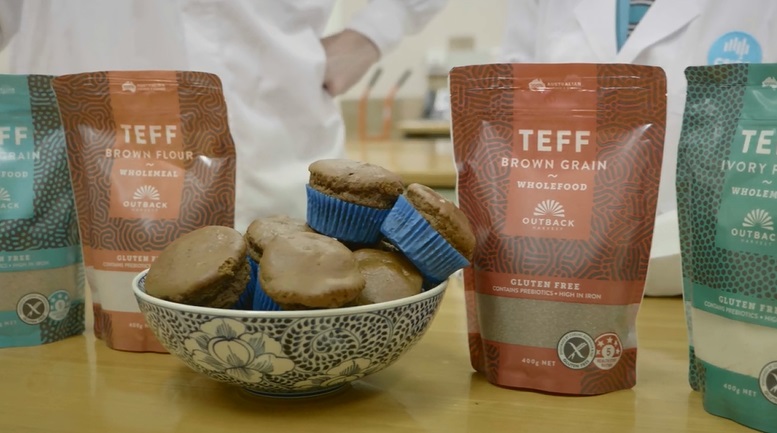
We’re developing a range of snacks using teff.
We’ve all heard of quinoa and its touted health benefits, but there’s another ancient gluten-free grain that’s about to make waves. It’s called teff, and it’s been a favourite in Ethiopian cooking for centuries.
Teff is the world’s smallest grain, and research shows that its fibre content is several times higher than wheat or rice. It also contains resistant starch. Its protein content is similar to wheat and it’s higher in iron than the more widely used grains. It’s also good source of calcium and other minerals. To top it off, it contains no allergens.
Riverina farmers, Fraser and Shane McNaul, started growing teff to diversify their cropping program so that it’s more sustainable and innovative. Teff’s growing season is short, from around December to March, and it fits neatly in between their usual crops of wheat, barley, corn and rice. By the time it’s harvested, teff looks like tall grass and the grain is so small it’s hard to hold it in your hand because it almost just runs through your fingers.
The McNauls started a company, Outback Harvest, and we’re collaborating with Food Innovation Australia Ltd (FIAL) to help them develop teff-based snacks and baked goods for retail markets around Australia.
With our expertise in food science and new product development, we have developed prototype muffins, bread and dry cake mixes. We also produced extruded teff snacks in our world-class pilot-scale food innovation centre in Werribee, Victoria.
When it’s milled, the brown teff produces a darker coloured flour that has a chocolate-like flavour, ideally suited to a product like muffins. The ivory teff produces lighter coloured flour with a nutty flavour, making it perfect for pancakes!
Fraser has moved to Melbourne to concentrate on developing packaging, marketing and distributing the first retail products, which have been endorsed as gluten-free by Coeliac Australia and Coeliac New Zealand. He is considering expanding into other value-adding opportunities such as snack bars, tortillas and flat breads.
Look out for brown and ivory teff foods soon.
Food Innovation Centre
Our food innovation centre has a track record of helping food manufacturing companies innovate.


8th September 2017 at 1:34 pm
Being grown in the same field doesn’t mean that there would be cross-contamination. Perhaps you’re thinking about when they’re processed in the same facilities as wheat, then there are opportunities for cross-contamination and traces of gluten may or may not be present.
8th September 2017 at 12:30 pm
Great initiative, important to not let the marketing get ahead of first world production supply as happened with Quinoa. First World demand can skyrocket the cost of Teff grain in Ethiopia and the region as whole. People will sell to the highest bidder and a basic and essential foodstuff will become unaffordable locally. There is also a possibility disruption to arable land use in the area.
8th September 2017 at 11:53 am
I think they would have to get it tested to get it approved and labelled as gluten free. Would love to hear their response to your question.
6th September 2017 at 5:10 pm
Would love to see some recipes using the teff flours.
6th September 2017 at 4:37 pm
I travelled to Ethiopia last year and tried teff in a local staple food product called injera (https://en.wikipedia.org/wiki/Injera). It is like a pancake which is rolled up and eaten like bread. It has a peculiar but pleasant “tang” in this form. When can we can get it in Perth!